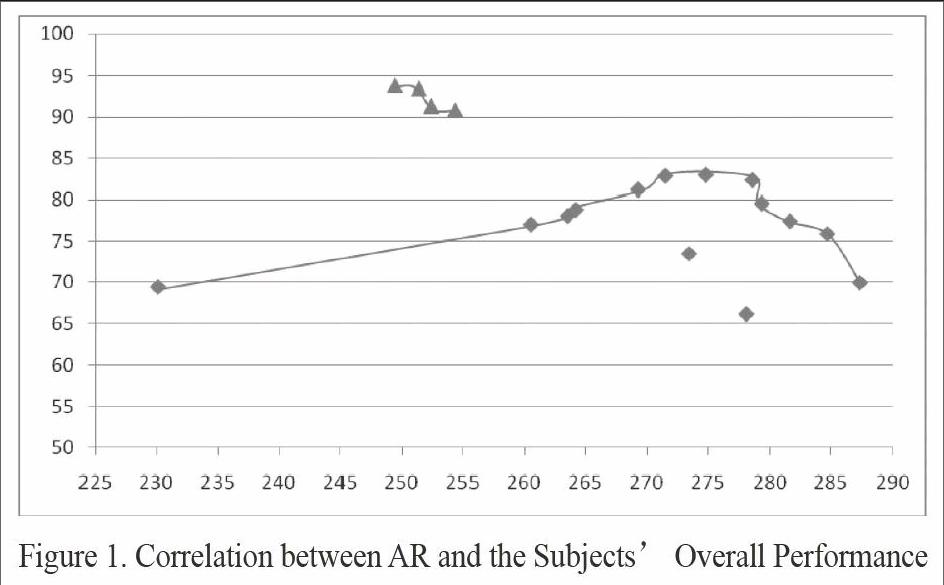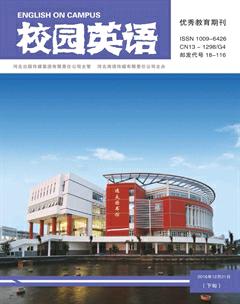An Experimental Report on the Correlation between the Articulation Rate of Target Language and Output Quality in E—C Simultaneous Interpreting
王畅

【Abstract】In the field of interpreting, the famous scholars Daniel Gile established interpreting models, which is known as Gile Model or Effort Model. Based on the Model, few scholars focus on the correlation between output articulation rate (AR) and influences quality (Q) in simultaneous interpreting (SI). But many beginners think that the faster one interprets, the better one performs. To check its reliability, the author expects to discover the correlation through experiment and aims at offering ways for trainees to adjust AR and helping them to improve SI quality in the learning process.
【Key words】experiment; effort model; simultaneous interpreting; articulation rate; interpreting quality
Introduction
Since the globalization is ever deepening in recent years, China, a country with rapid economic growth and increasing cross-cultural communication, has an ever growing demand for qualified interpreters, especially simultaneous interpreters.
But as I know, quite a lot of SI beginners take it for granted that the faster one interprets, the better one performs. Therefore, many of them are inclined to interpret very fast between pauses of source language input so as to avoid overlapping of sub-tasks, such as listening and speaking at the same time, holding that this is how one can best do SI. (Yu, 2009:14)
In this regard, however, very few of researchers pay attention to the correlation between output AR and interpreting quality while an overwhelming majority of researchers are focusing on how the input AR influences interpreting quality. Therefore, based on the Effort Model, the author decides to conduct an experiment focusing on the correlation between articulation rate and quality in the output of SI so as to testify the correctness of the popular opinion among SI beginners.
Part One Descriptions of the Experiment
The experiment selects 14 MTI (Master of Translation and Interpretation) second-year graduate students from the interpreting class and 4 high-level interpreting graduate students who have rich experience in live interpreting as the experimental subjects. A briefer introduction is as follows.
Time: 21st October, 2016
Venue: SI lab of College of Foreign Languages and Cultures of Sichuan University
Subjects: 14 MTI second-year graduate students from the interpreting class and 4 high-level interpreting graduate students
Firstly, The audio input is selected from the famous TV talk show YangLan One On One, interviewing Lee C. Bollinger, president of University of Colombia. The speech rate has been adjusted to about 120 words per minute, because all the 14 subjects have been trained English to Chinese SI with speed around 120 wpm.
Secondly, in order to better focus on the impact of AR on subjects performances, the material is intentionally designed to be simple to avoid tension and anxiety.
Thirdly, a printed handout has been prepared, containing general introduction of the topic, tasks the subjects should do, and key words.
One hour before the experiment formally starts, the handouts have been distributed for advance preparation. Furthermore, in order to let the subjects be familiar with the speakers voices and way of speaking, they are given a two-minute listening material to warm up. After the warming-up, all the subjects begin to interpret the material.Then their recording files are collected. After all the procedures are done, the whole experiment comes to a conclusion.
Part Two Results and Analysis of the Experiment
Articulation rate (AR) in this experimental report means the speed of an interpreter in the English to Chinese SI task. To improve the precision of AR data, a professional device needs to be adopted. In this experiment, the chosen device is the digital wave-editing software named Nero Wave Editor.
As to the performance of all subjects, it will be evaluated from five aspects. They are the correction rate of figure interpreting, contents, implicit meaning, delivery and logic according to the evaluation criterion of China Accreditation Test for Translators and Interpreters (CATTI). The following Figure 1 is a line chart showing the correlation between AR and the subjects overall performance
In this line chart, the horizontal axis represents the data of AR and the vertical axis represents the scores of the SI output. represents the 4 high level subjects and represents the 14 common subjects.
From the line chart, AR does not always in direct proportion to interpreting quality, only when the interpreter speaks in proper speed can he or she performs well. Moreover, by looking at the line representing the four high-level subjects, we also get the information that high level trainees tend to speak more slowly than the common trainees but get better performance.
Part Three Conclusions of the Experiment
When checking the recordings of the high level subjects, it finds that their articulation is smooth and neat from the beginning to the end. Whats more, there are few long pauses, blanks, repeated words appears during their interpreting. Generally they have moderate and steady AR around 250 cpm during the whole process, which indicates that they have allocated relatively balanced efforts on SI.
When it comes to common subjects, 13 out of 14 subjects possess faster AR than the four high level ones. It reveals that common SI trainees have been more or less affected by the popular view “the faster one interprets, the better one performs”.
After unveiling the major problems found during the experiment, the author thinks it is necessary to offer suggestions to those common trainees for improvement.
First of all, the SI trainees should avoid the opinion that the faster one interprets, the better one performs. they should be aware that good SI interpreters tend to have a relatively low AR. Next, a SI trainee needs to avoid the unconscious repeat of what have been said. A good suggestion is that you should always record the voice whenever do SI practice. Every time after finishing the interpreting, spend some time listening to the recordings and find out how many times you rephrase or repeat. Force yourself to go on speaking no matter when and where you really want to repeat.
Since the speaking speed in daily life does have influence on the AR in SI (Yu, 2009, 81), subjects with very high or very low AR more or less adopt the speeds from daily life habit. Therefore, if you belongs to either of the two kinds, it is suggested that you need to develop a more suitable AR in SI practice.
First, you may choose a more proper AR referring to the line chart in this experiment and does SI practice by using materials similar to that of the experiment. Then maintain the new AR for two or three weeks to make sure you have been accustomed to the output speed. The next thing you should do is to evaluate your SI output quality. If the quality of SI output during the several weeks with higher AR is always better than output with former AR, it means a higher AR is more suitable for you in terms of the material and vice versa.
References:
[1]Gile,Daniel.Basic Concepts and Models for Interpreter and Translator Training[M].Amsterdam/Philadelphia:John Benjamins Publishing Company,1995.
[2]劉和平.口译理论与教学[M].北京:中国对外翻译出版公司,2005.
[3]庾恺珊.英汉同声传译中译语语速与信息量的关系[D].厦门大学,2009.

